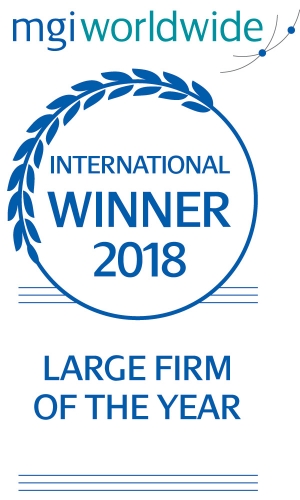The Market Approach to Business Valuations
by John T. Wojcik, CPA, MST, CVA | Selden Fox
Performing a business valuation can help the business owner and management determine what their business is worth. In other words, it is a way to measure their business’s economic value. There are three acceptable methods that practitioners can use to perform a business valuation: the asset approach, the income approach, and the market approach. Each method may at times appear more theoretically justified in its use than others. The soundness of a particular method is entirely based on the relative circumstances involved in each individual case. In a previous article, we reviewed the basics of the asset approach and discussed when it should be used, how it is applied, and its key benefits.
The idea behind the marked approach is that the value of a business can be determined by reference to reasonably comparable guideline companies for which transaction values are known. The market approach mirrors how the value of residential real property is valued. Through an analysis of prior sales for comparable homes, or in this case businesses, a value for the entity is determined. To help clients, prospects, and others understand the market approach, review the following summary of its key details.
What is the Market Approach?
The market approach values a business by looking to the marketplace for recent sales of similar businesses. This approach is attempting to ascertain the business’s “fair market value,” or the “going rate.” Although it can be difficult to find comparable data, the marked approach can be the ideal method to use when the business being valued closely resembles other businesses on the open market in various characteristics such as industry, market influence, revenue, and growth potential. If there are only a handful of similar businesses for comparison, an alternate valuation method may be the better option. It would also be difficult to use the market approach to assign value to a sole proprietorship; finding information on sales of privately held businesses may be challenging.
Advantages and Disadvantages
As with any valuation approach the market approach has significant advantages and disadvantages. The first advantage is that is uses actual data based on actual transaction prices, not estimated based on a number of complex assumptions or judgments. The market approach can also be relatively simple to apply as this approach derives estimates of value from relatively simple financial ratios, drawn from a group of similar companies.
Some drawbacks for the market approach are that it is often difficult to obtain recent comparable company data and the standard of value being used may be unclear. Many companies are so unusual, small, diversified, etc. that there have not been any sales of similar companies. Also, most transaction databases provide financial and pricing data but do not explicitly indicate whether the reported transaction was arms-length, strategic, synergistic, asset versus stock, etc. The standard of value is the most important determining factor of a valuation and if this is unclear in a previous sale then it is difficult to compare sales.
Pricing Multiples
Pricing multiples are used to help determine a reasonable selling price for a business based on market data. Pricing multiples are ratios calculated by comparing the sales price to a specific performance characteristic. A few of the more common pricing multiples include:
- Selling price divided by gross revenue
- Selling price divided by sales
- Selling price divided by cash flow
- Selling price divided by the book value of business assets
- Selling price divided by net income
A valuation professional would calculate the pricing multiples for comparable businesses and determine the best way to aggregate that information. Sometimes, a simple average is best. Other times, a range is ideal.
Market Approach Methods
There are two main ways for valuation professionals to utilize the market-based approach to value a business.
They can use the Comparative Transaction Method which requires the business valuation consultant to gather data on the sales of private companies. This method is possible only if the private sales data is available, so it may not be practical for certain industries.
The Guideline Publicly Traded Company Method is when the valuation professional gathers data on publicly traded companies. Publicly traded information is readily available, and the data is reliable. However, this method often only considers the sale of a non-controlling ownership interest which may not translate to the sale of the entire business.
Contact Us
Experienced practitioners can identify the appropriate business valuation method for each unique situation – if the data is available, it may be the market approach, or a valuation analyst may decide that the asset or income approach are better suited for a valuation. A business valuation analyst will have the expertise necessary to select the valuation method that is best for your situation. If you have questions about valuation methods, or need assistance with a business valuation, Selden Fox can help! For additional information call us at 630.954.1400 or contact us directly. We look forward to speaking with you soon.
John T. Wojcik, CPA, MST, CVA


 John Wojcik is a Certified Valuation Analyst and a member of the National Association of Certified Valuators and Analysts (NACVA). John earned his bachelor’s degree in accounting and finance from Illinois State University and his MST in taxation from Northern Illinois University – College of Business.
John Wojcik is a Certified Valuation Analyst and a member of the National Association of Certified Valuators and Analysts (NACVA). John earned his bachelor’s degree in accounting and finance from Illinois State University and his MST in taxation from Northern Illinois University – College of Business.




